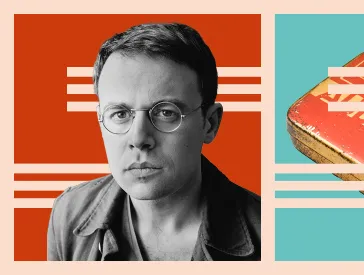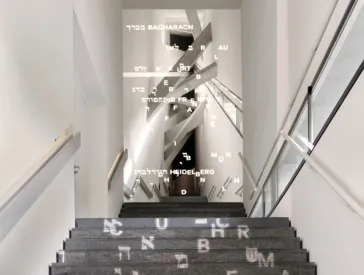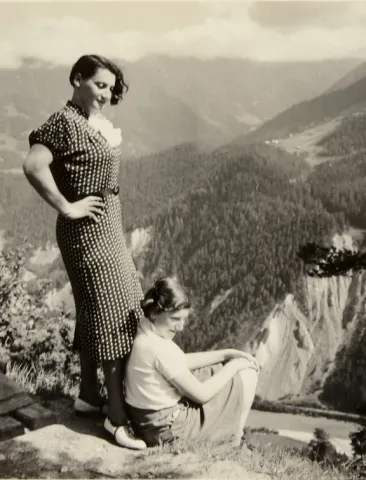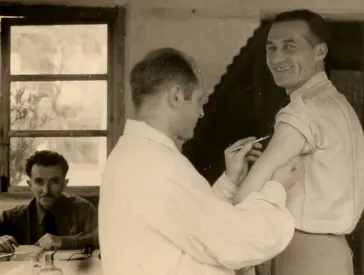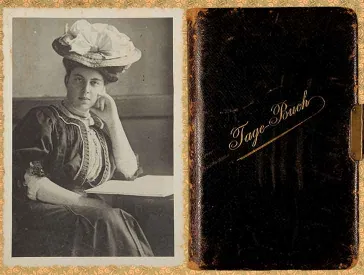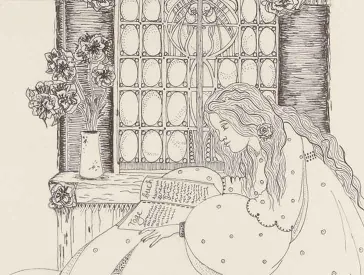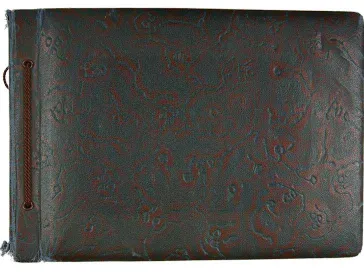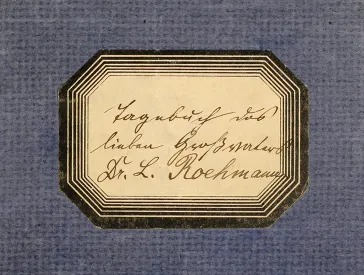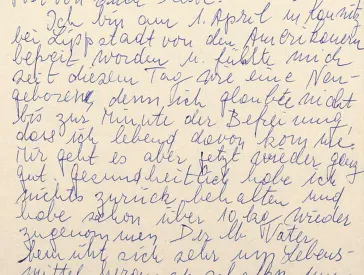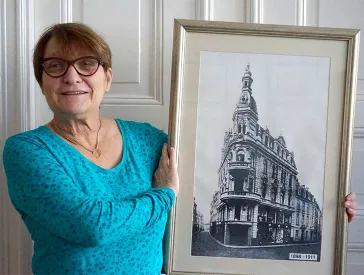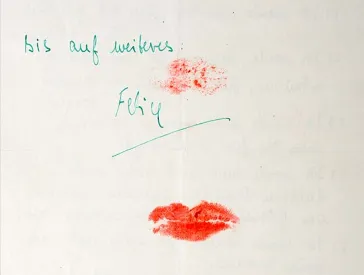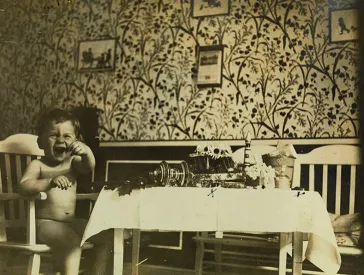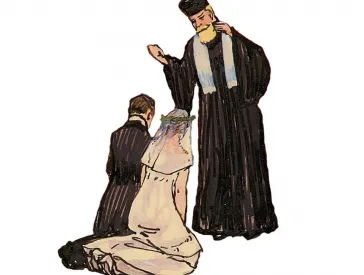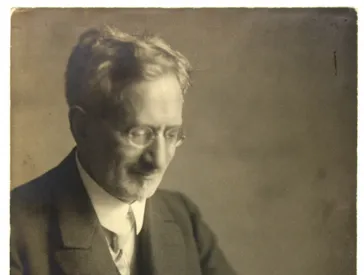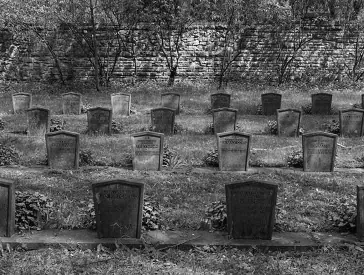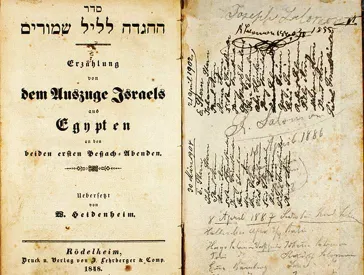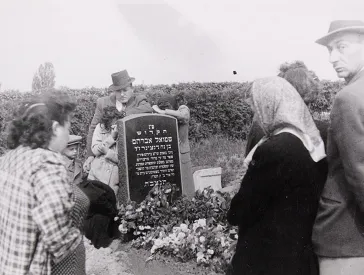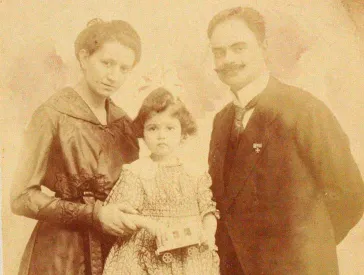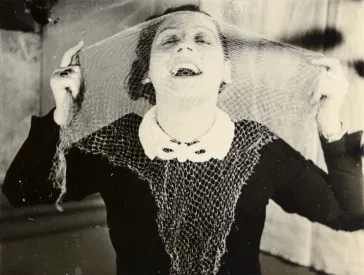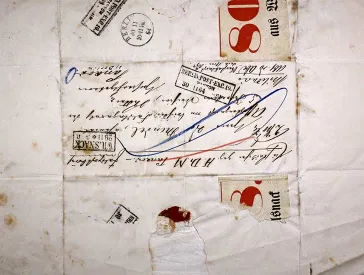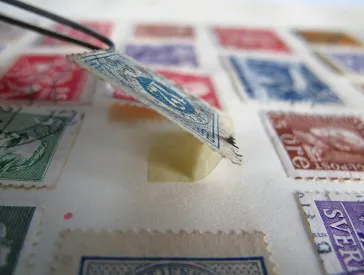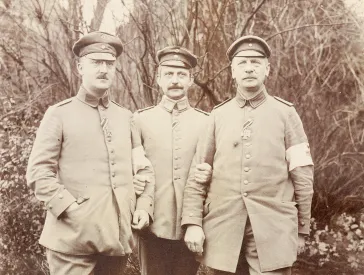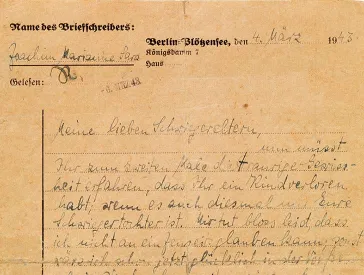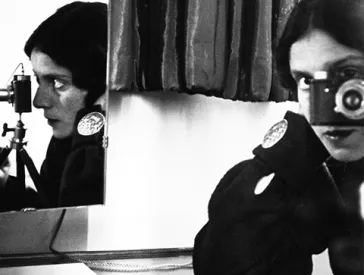
Lisel Weber; JMB, Schenkung des Vereins Lastoria e.V. Bremen
Aus dem Müll geborgen
Die Fotoalben der Künstlerin Olga Irén Fröhlich
Vor mir sehe ich Momentaufnahmen eines bewegten Lebens. 511 Augenblicke. Fotografisch festgehalten, auf vier Fotoalben verteilt und sorgfältig nach Themen geordnet. Sie stammen aus dem Nachlass von Olga Irén Fröhlich, einer deutsch-jüdischen Sängerin und Kabarettistin der 1930er bis 1960er Jahre.
Hinter den Fotografien, die ich tagtäglich in den Händen halte, verbergen sich oft interessante und ergreifende Biografien. Die Geschichte der vier Fotoalben und ihrer ehemaligen Besitzerin ist für mich allerdings eine ganz besondere, da sie bewegend und ungewöhnlich zugleich ist.
Leben und Werk
Olga Irén Weber wurde am 9. Januar 1904 in Hamburg als Zweitjüngste von acht Geschwistern geboren. Ihre Familie stammte aus Ungarn und hatte sich, nach einem kurzen Aufenthalt in Breslau, schließlich in Hamburg niedergelassen, wo ihr Vater Carl Weber das Möbelgeschäft Leers und Weber mit gründete. Bereits ihr Bruder Ede und ihre Schwester Lisel waren als Pianist beziehungsweise als Ausdruckstänzerin künstlerisch tätig. Da Olga Irén jedoch in der Firma ihres Vaters arbeiten sollte, besuchte sie zunächst die Handelsschule in Hamburg.
Im Oktober 1922 heiratete sie Alfred Fröhlich und zog mit ihm nach Breslau, wo am 29. November 1923 ihre Tochter Margit geboren wurde, die 1938 mit einem Kindertransport nach England gelangte.
In den 1920er Jahren begann Fröhlichs Karriere als Kabarett-Künstlerin, genauer als Diseuse. Ihren ersten Auftritt hatte sie bei der Eröffnungsfeier des neuen Hauses der Odd Fellow Lodge in Breslau, wo das Ehepaar Mitglied war. Daraufhin erhielt sie viel positive Resonanz und weitere Engagements folgten. Ab 1927 tourte sie durch ganz Deutschland und trat dabei unter anderem im Varieté Astoria in Bremen und dem Kabarett der Komiker in Berlin auf.
Bereits 1934 flüchtete sie ohne ihre Familie in die Schweiz, wo sie sich jedoch stets nur neun Monate am Stück aufhalten durfte. In der Zwischenzeit trat sie in Belgien, den Niederlanden, Österreich und Luxemburg auf. Nach der Scheidung von ihrem ersten Mann ging sie schließlich eine Scheinehe mit einem Bieler Hotelier ein, um ein dauerhaftes Aufenthaltsrecht in der Schweiz zu erhalten.
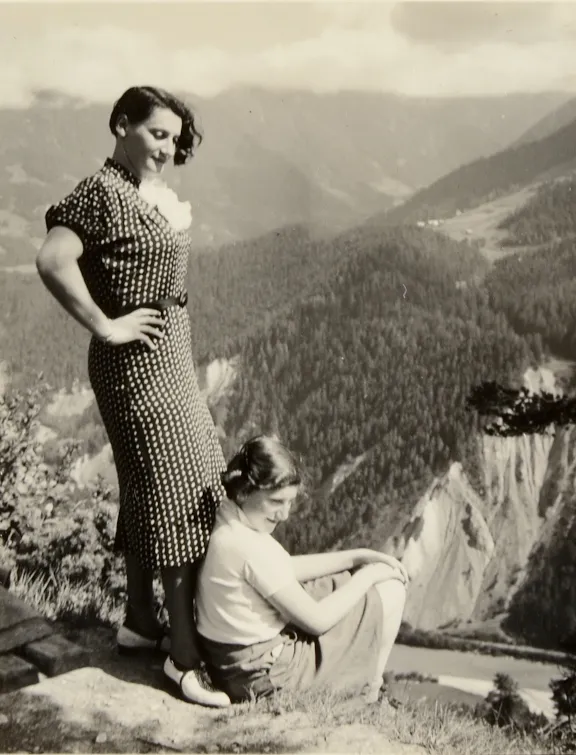 X
X
Olga Irén Fröhlich und ihre Tochter Margit in den Bergen, Schweiz zwischen 9. Jul 1938 und 9. Aug 1938; Jüdisches Museum Berlin, Schenkung des Vereins Lastoria e.V. Bremen
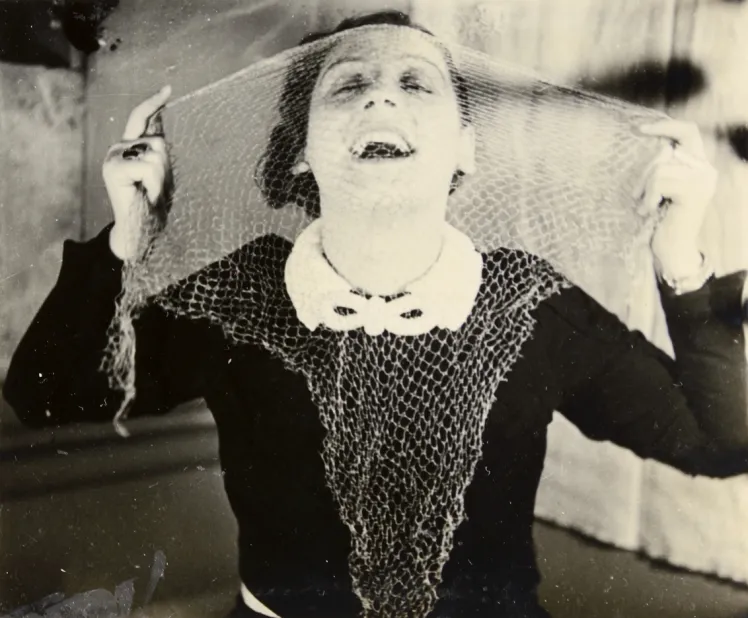
Porträt von Olga Irén Fröhlich, zwischen 1925 und 1935; Jüdisches Museum Berlin, Schenkung des Vereins Lastoria e.V. Bremen
Ende der 1940er Jahre ließ sich Fröhlich von ihrem zweiten Ehemann scheiden und zog 1952 nach Bremen. Neben ihren regelmäßigen Auftritten im Varieté Astoria arbeitete sie in den 1950er und 1960er Jahren auch für die Rundfunksender Freies Berlin, RIAS und Radio Bremen. Die künstlerische Leiterin des Astoria, Renate Noack, wurde ihre Lebensgefährtin und die beiden lebten gemeinsam in einer Wohnung im Ostertor in Bremen. Olga Irén Fröhlich verstarb am 24. Februar 1995 in Bremen.
Künstlerischer Nachlass
Die Fotoalben, die Fröhlichs Leben so anschaulich erzählen, wurden von einem engagierten Bremer Mitbürger aus einem Müllcontainer geborgen. Ohne seinen Einsatz wären ihre Lebenszeugnisse heute zerstört. Ob die Fotoalben direkt nach dem Tod Fröhlichs oder erst einige Jahre später entsorgt werden sollten, lässt sich im Einzelnen nicht mehr rekonstruieren. Sicher ist, dass der Finder die Objekte an eine Bekannte weitergab, die sie verwahrte und schließlich dem Bremer Verein Lastoria e.V. schenkte, der sich der Geschichte des Varietés Astoria widmet.
Der Verein begann, über die Grenzen Deutschlands hinweg umfangreiche Recherchen zu Fröhlichs Werk und Biografie durchzuführen und schließlich anhand von Publikationen und Online-Beiträgen zu veröffentlichen. Da dem Verein sehr am Erhalt des Erbes Olga Irén Fröhlichs und dessen Zugänglichkeit für die Öffentlichkeit gelegen ist, entschied er sich 2014, die vier Fotoalben an das Jüdische Museum Berlin zu übergeben. Als ich mit der Inventarisierung begann, waren die Rechercheergebnisse des Vereins meine wichtigste Informationsquelle.
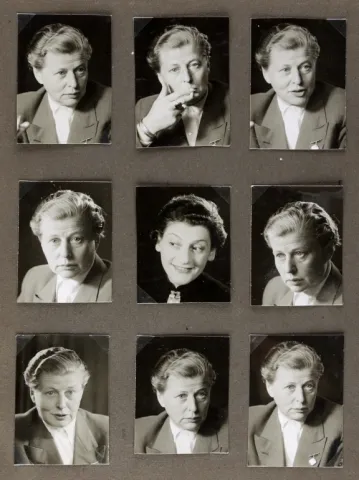
Fotoserie mit acht Porträts von Renate Noack und einem Porträt von Olga Irén Fröhlich in der Mitte, vermutlich Bremen zwischen 1953 und 1960; Jüdisches Museum Berlin, Schenkung des Vereins Lastoria e.V. Bremen. Weitere Informationen zu diesem Objekt finden Sie in unseren Online-Sammlungen
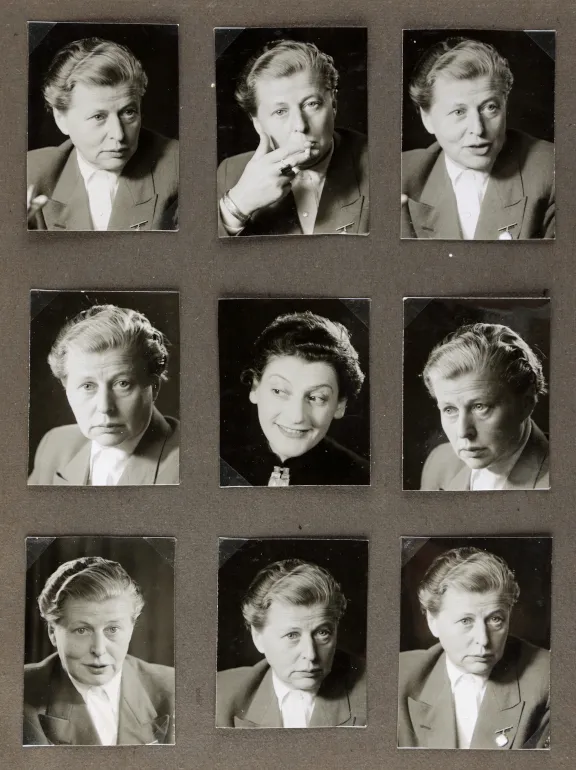 X
X
Fotoserie mit acht Porträts von Renate Noack und einem Porträt von Olga Irén Fröhlich in der Mitte, vermutlich Bremen zwischen 1953 und 1960; Jüdisches Museum Berlin, Schenkung des Vereins Lastoria e.V. Bremen. Weitere Informationen zu diesem Objekt finden Sie in unseren Online-Sammlungen
Neben Büchern, Zeitschriften und Online-Datenbanken sind aber auch die Fotografien selbst eine wichtige Quelle. Ihr Potenzial besteht darin, über biografische Fakten hinaus Aufschluss über soziale Beziehungen und persönliche Erinnerungen der betreffenden Person zu geben. Die Alben von Olga Irén Fröhlich umfassen eine Vielzahl von Aufnahmen ihrer Kolleg*innen und Freund*innen, die ihr aus halb Europa und den USA schrieben. Auf vielen finden sich Widmungen, die Sympathie und Respekt für ihre Person und ihre künstlerische Arbeit ausdrücken:
Olga Irén Fröhlich, der ‚konzentriertesten Kabarettistin', die aber außerdem auch noch ein überraschend angenehmer Mensch ist, in aufrichtigster Zuneigung.
Diese Widmung von Karl Schnog, einem deutsch-jüdischen Schriftsteller und Kabarettisten, ebenso wie die der anderen Kolleg*innen und Freund*innen Fröhlichs sind Zeugnis für die große Anerkennung ihres künstlerischen Schaffens und ihre Bekanntheit innerhalb der Kabarettszene. Doch erst durch die Fotografien wird die Lebensgeschichte Olga Irén Fröhlichs greifbar und lebendig, ihre Biografie verständlich. Eben dies ist es, was private Fotografie leisten kann und was mich bei meiner Arbeit immer wieder aufs Neue fasziniert.
Anna Rosemann, fotografische Sammlung, sucht und findet immer noch neue Informationen zum Leben von Olga Irén Fröhlich.
PS: Mein Dank gilt dem Verein Lastoria e.V. und insbesondere Frau Felsing für die umfangreichen Informationen.
Zitierempfehlung:
Anna Rosemann (2015), Aus dem Müll geborgen . Die Fotoalben der Künstlerin Olga Irén Fröhlich .
URL: www.jmberlin.de/node/7567
Blick hinter die Kulissen: Anekdoten und spannende Funde bei der Arbeit mit unseren Sammlungen (22)
